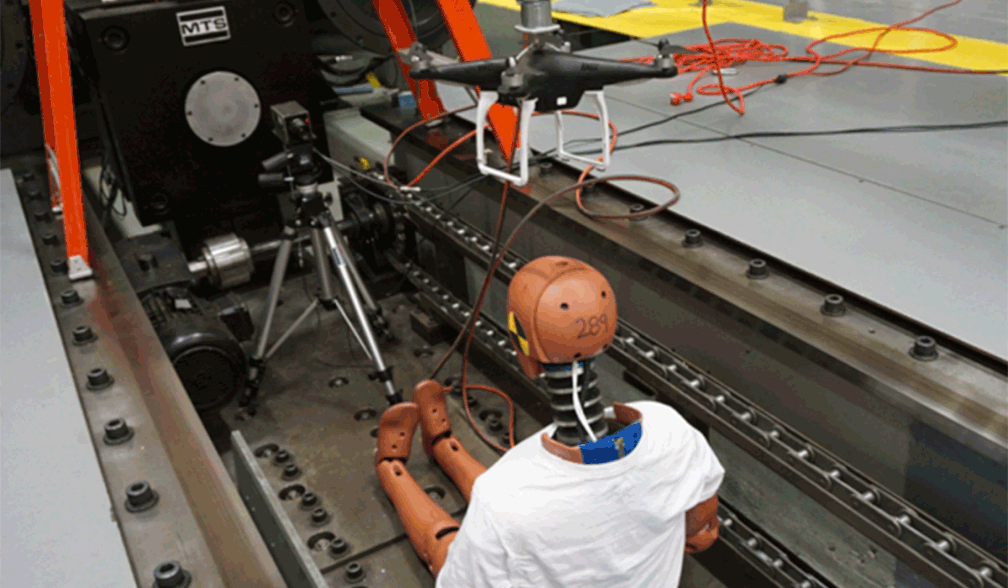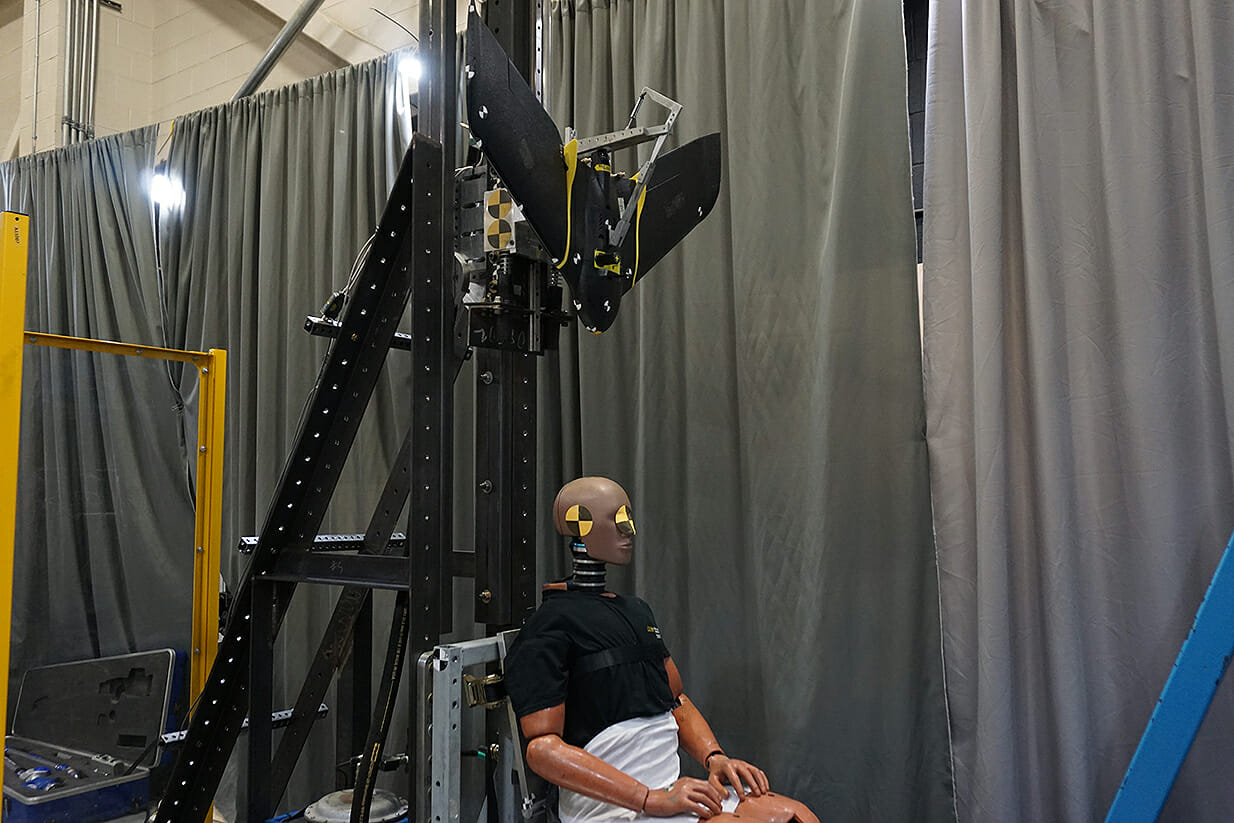Introduction
In order to realize the flight of a drone over people, the user needs to carry out a number of mandatory approvals both with local authorities and with the operational bodies of the Unified Air Traffic Management System, where, among other things, it will be necessary to convince the support the safety of the service is that the planned flight will be safe for everyone in the place of its implementation. But, nevertheless, what happens if the drone does fall? Or even so, what happens when DJI PhantomMavic Pro hits a human head? ASSURE experts tried to answer this question after conducting an 18-month study.
ASSURE (Alliance for System Safety of UAS through Research Excellence) - consists of twenty-three leading world research institutes and more than a hundred leading industry / government partners. The alliance has expertise in a wide range of research areas, including: Air Traffic Control Interaction, UAS Airport Ground Control, Command & Communication, Detection & Prevention, Human Factors, UAS Noise Reduction, UAS Signatures, Drone Pilot Training & Certification, Security for low-altitude control, spectral control and UAS traffic control.
About the study
ASSURE's extensive ground collision research was conducted by the Universities of Alabama, Huntsville and Mississippi and the National Institute for Aviation Research at The University of Wichita and other partners of the alliance for possible injuries as a result of drone collisions with people. In addition to investigating potential drone crash injuries, the researcher also sought to develop a safety testing methodology for providing recommendations to the FAA. The American popular science magazine Popular Mechanics noted that this is the only comprehensive scientific study of its kind in the world.
The results of the study will surprise many. While the videos look quite dramatic, the ASSURE researchers found that the small plastic drones were flexible and resilient enough. And drones like the DJI Phantom and Mavic Pro actually absorbed more impact energy, said David Arterburn, Principal Investigator for ASSURE. He also added:
"It is a common misconception that every drone is like a rock, and if it collides with a person, it will hurt just like being hit by a rock."
The ASSURE study was as comprehensive as possible. 512 impact tests were conducted using 16 different types of drones, including popular consumer drones such as the DJI Phantom and Mavic Pro. The researchers also used various types of payloads (batteries, wood blocks) weighing between 322 grams and 6 kilograms. In addition, full anthropomorphic and simplified head and neck impact tests are included, as well as a post-death impact test.
The most common injuries sustained from collisions between drones such as the DJI Phantom and Mavic Pro and a human head were lacerations, cuts and bruises. In one case, there was a serious injury to the eye, which is confirmed by ASSURE that the rapidly rotating propellers of a quadcopter can cause such an injury. As a result, one of the recommendations from ASSURE is the mandatory use of rotor guards.
Safety first
According to David Arterburn, not only is the general public interested in learning more about the risk of injury when drones collide with people, but drone manufacturers themselves are also positively eager for detailed research:
“Companies are really responding to the fact that they now have clear standards and testing methodology that can lead to actionable design changes that improve the safety of their products to the public.”
The reason for this is obvious, since many of the successful unmanned services, such as the delivery of packages, food or medicine, will often be carried out in urban and suburban environments, and, accordingly, will include flights over people, which is prohibited by law in any state.

Drone design changes based on ASSURE findings
It appears that ASSURE's research is already having an impact on drone design. Previously, speed and payload were top priorities in drone design, now the focus has shifted to safety:
“Drone makers can now compare their designs with ASSURE data,” says Arterburn. "They've never had such measurements before... when you get into the 3.6 to 4 kilogram range (in terms of weight), the mass and elasticity of the structure combine, causing more serious injuries."

Payloads
increased mass, which can lead to more serious injury:
Due to the design, many payloads lack the elasticity that aircraft have, ”says Arterburn. "Both construction and weight play an important role in determining the potential for injury."
For example, a battery that is installed outside a drone poses a much greater risk of injury than when it is placed inside the drone. It is likely that rules will soon be developed to regulate the type of payloads, as well as the configurations that can be carried by drones delivery. Parachute safety systems such as ParaZero and Indemnis can also significantly reduce risk, but much more testing of these systems in a controlled environment is required to be fully confident.
Summing up the above, we can say that ASSURE research on injuries in the event of a drone collision with a human head is one of the first, but very important steps to make a safe unmanned delivery service a reality, which in general once again indicates a great future for the commercial UAV niche.
.







